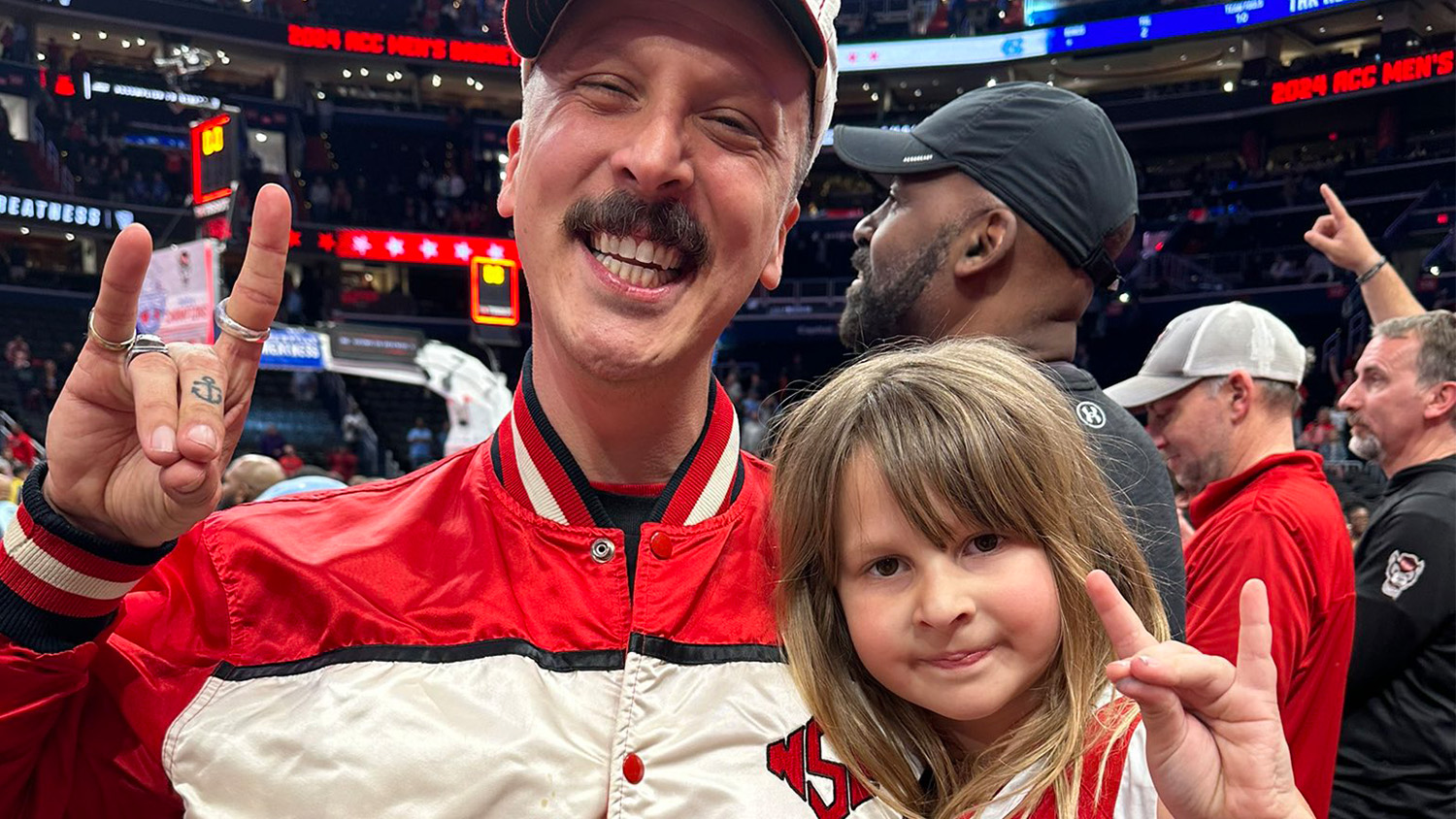Desk Set: Dr. Greg Lewbart
Take a look inside the office of Dr. Greg Lewbart, professor of Veterinary medicine and go-to snake expert.

Office: C-295 Main Building, College of Veterinary Medicine
Who: Dr. Greg Lewbart is a professor of aquatic, wildlife and zoological medicine in the College of Veterinary Medicine. He makes regular trips to the Galapagos as part of a research team to study the health of wildlife populations. Before joining the faculty in 1993, he worked for a wholesaler of tropical fishes.
Night at the Museum . . . A shelf in Lewbart’s office looks like it belongs in an old-style natural history museum. There’s a giant lobster claw, a petrified manatee rib, a loggerhead sea turtle skull and a stuffed piranha. A dolphin larynx floating in alcohol was given to him by his mentor at the University of Pennsylvania’s veterinary school. He also displays his mentor’s 1950s-era microscope. “It doesn’t have a light source — just a mirror at the bottom,” Lewbart says.
Lewbart’s office is a testament to the critters he studies and the travels he’s taken. Below, a stuffed copperhead purchased at a yard sale. (He usually keeps the glass dome in place.)
Birds, too . . . A carved statue of an ivory-billed woodpecker is hard to miss. Lewbart has authored reams of academic articles, but he’s also penned a novel, Ivory Hunters: A Novel of Extinction. It’s a scientific mystery about a Florida game warden’s search for the ivory-billed woodpecker, a bird thought to be extinct. Some of the characters were inspired by people he met while working for a tropical fish wholesaler near the Florida Everglades. Another souvenir from his Florida days is an alligator skull. Lewbart befriended a man who lived in a trailer nearby and treated the man’s dog for heartworms at no charge. The man gave him the skull as payment.
He’s a snake guy . . . When snakes are in the news, Lewbart is often interviewed about how to identify snakes. One of the most interesting curios in his office is a fake egg, the kind chicken farmers put in a nest to encourage a hen to lay. It seems a snake got into a coop and thought the fake egg was the real thing. Lewbart operated, removing the fake egg from the snake’s belly. The snake lived, and the fake egg lives on Lewbart’s shelf.

Don’t touch the fangs . . . Lewbart’s pet snakes have included a one-eyed rescue ball python who lived for 35 years. He’s never had a venomous snake, but he does have a stuffed baby copperhead under a glass dome. “My wife got it for me at a yard sale for two bucks,” he says. Underneath the specimen, a label says, “Do not touch fangs if glass dome is removed.”
- Categories:


